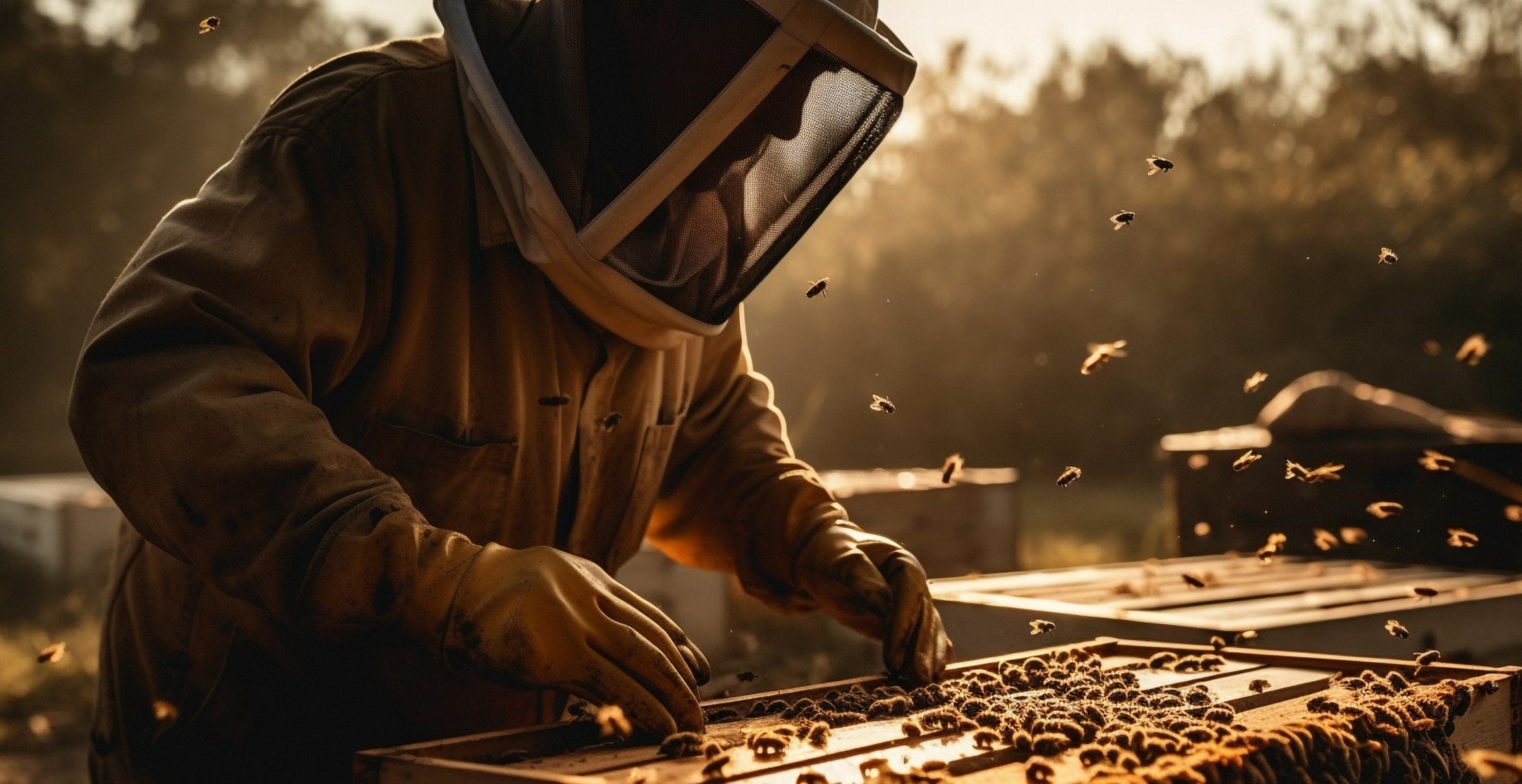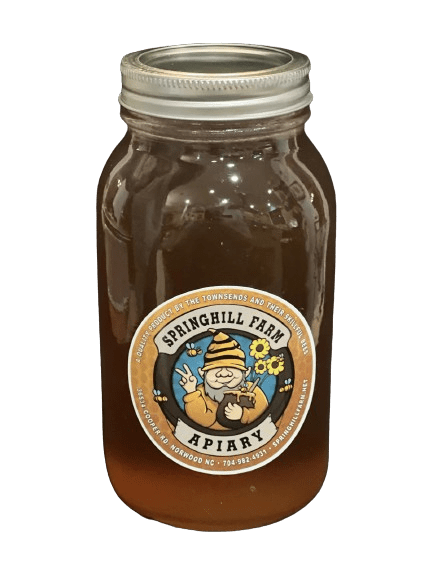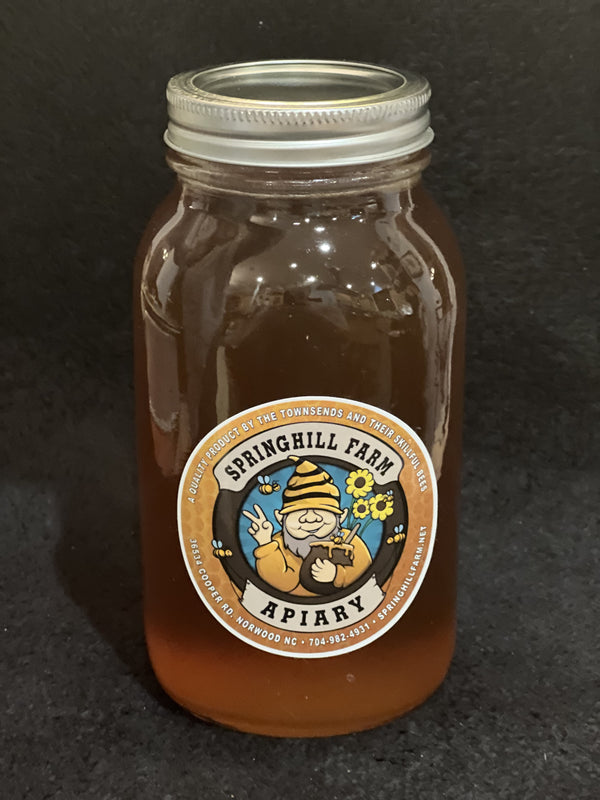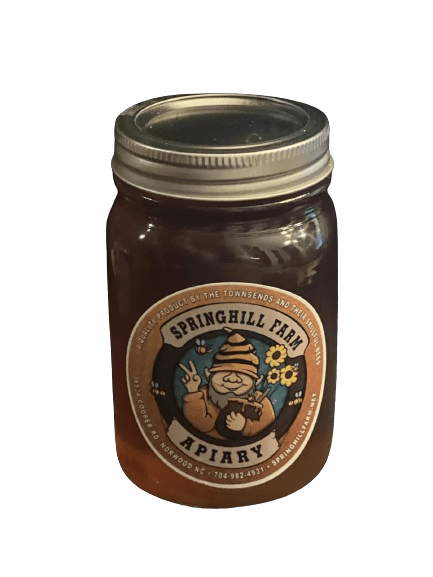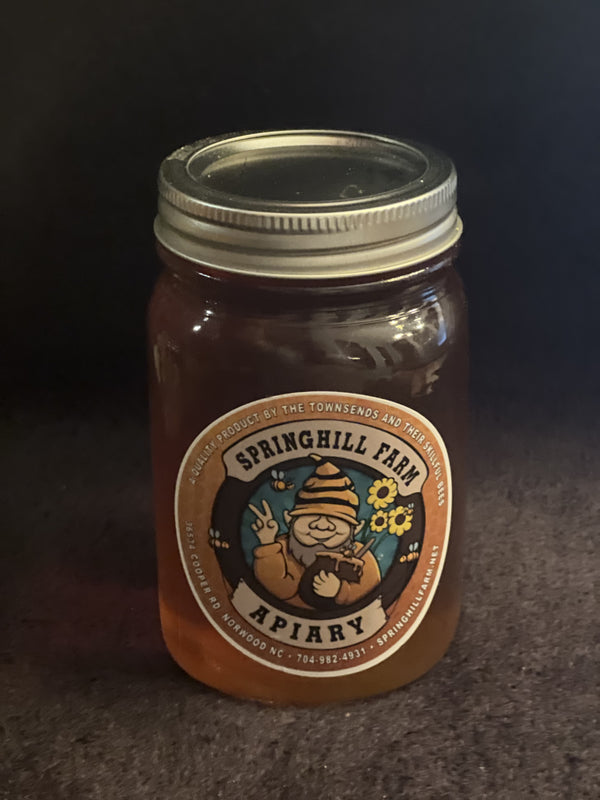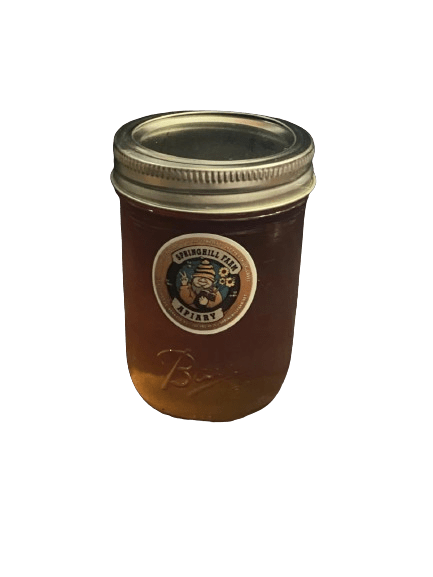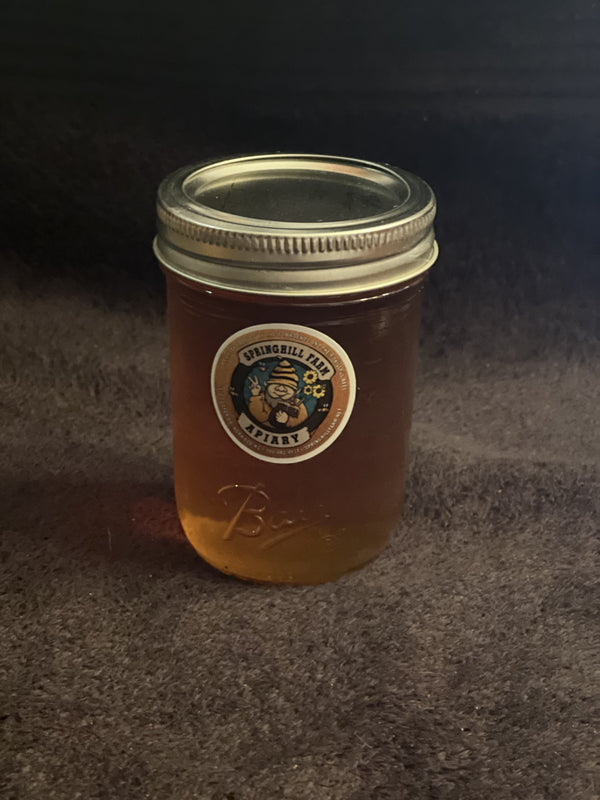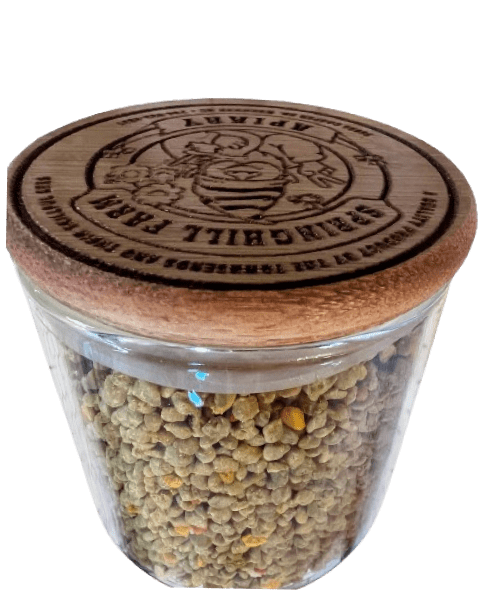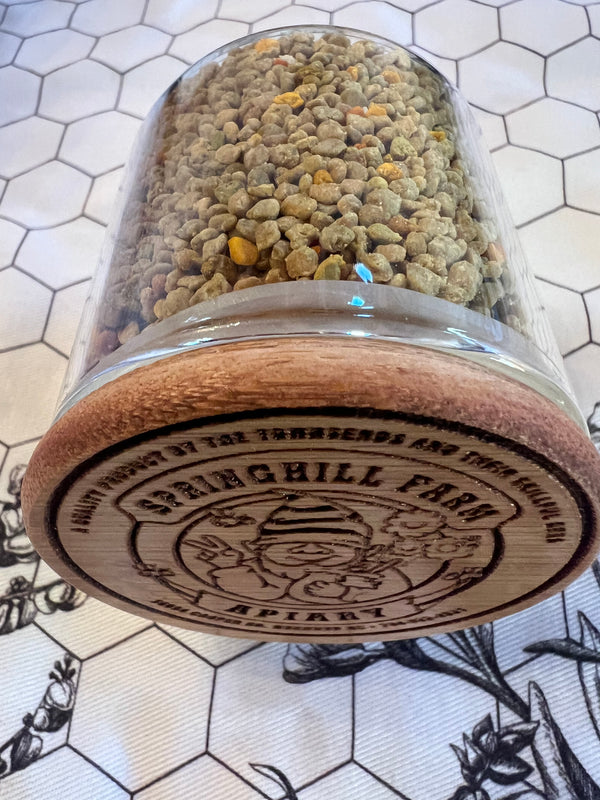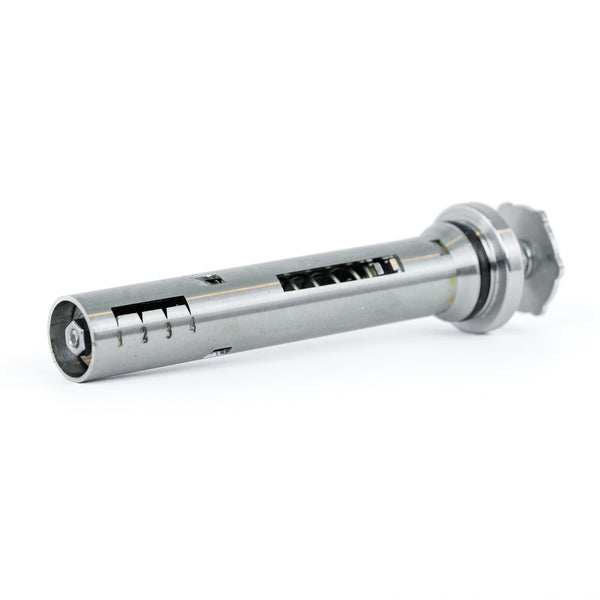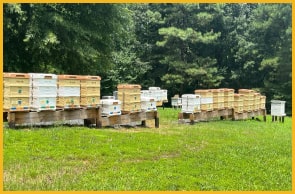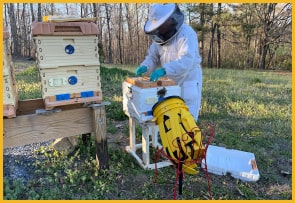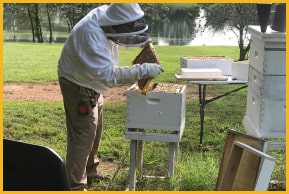We had an amazing time at the North Carolina Beekeepers Association Convention in Pinehurst! Connecting with fellow beekeepers made the event a huge success. Thank you to everyone who visited our booth! Enjoy the highlights in the images below.
The benefits of natural honey or organic honey

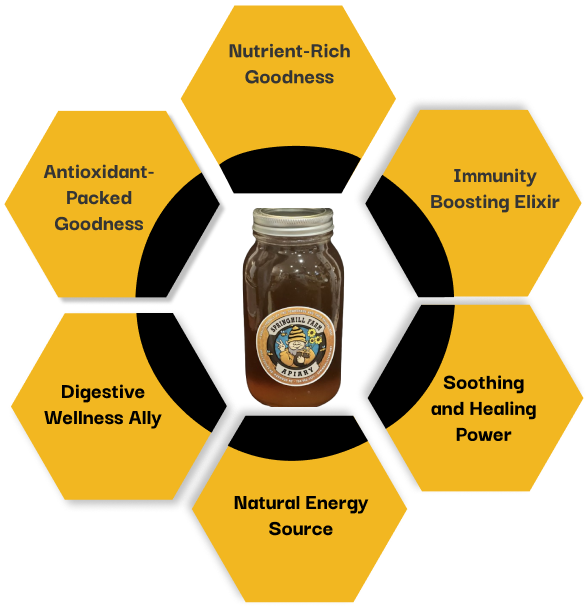
Nutritional profile
The composition of honey is mainly sugars and water (Table 1). In addition, it also contains several vitamins and minerals, including B vitamins as shown in Table 2. The other constituents of honey are amino acids, antibiotic-rich inhibine, proteins, phenol antioxidants, and micronutrients. The sugars in honey are sweeter and give more energy than artificial sweeteners and the most abundant sugar in honey is fructose (Table 1).
Table 1
Nutritional composition of honey
|
|
Blossom honey |
Honeydew honey |
||
|---|---|---|---|---|
|
Range |
Mean |
Range |
Mean |
|
|
Water |
15 – 20 |
17.2 |
15 – 20 |
16.3 |
|
Total sugars |
|
79.7 |
|
80.5 |
|
Monosaccharides |
|
|
|
|
|
fructose |
30 – 45 |
38.2 |
28 – 40 |
31.8 |
|
glucose |
24 – 40 |
31.3 |
19 – 32 |
26.1 |
|
Disaccharides |
|
|
|
|
|
sucrose |
0.1 – 4.8 |
0.7 |
0.1 – 4.7 |
0.5 |
|
others |
2.0 – 8.0 |
5.0 |
1.0 – 6.0 |
4.0 |
|
Trisaccharides |
|
|
|
|
|
oligosaccharides |
|
3.1 |
|
10.1 |
|
erlose |
0.5 – 6.0 |
0.8 |
0.1 – 6.0 |
0.1 |
|
melezitose |
|
< 0.1 |
0.3 – 22 |
4.0 |
|
others |
0.5 – 1.0 |
0.5 |
0.1 – 6.0 |
3.0 |
|
Minerals |
0.1 – 0.5 |
0.2 |
0.6 – 2.0 |
0.9 |
|
Amino acids, proteins |
0.2 – 0.4 |
0.3 |
0.4 – 0.7 |
0.6 |
|
Acids |
0.2 – 0.8 |
0.5 |
0.8 – 1.5 |
1.1 |
|
pH value |
3.2 – 4.5 |
3.9 |
4.5 – 6.5 |
5.2 |
*Data in g/100 g of honey.
Table 2
Chemical elements found in honey
|
Minerals |
Amount (mg/100 g) |
Vitamins |
Amount (mg/100 g) |
|---|---|---|---|
|
Sodium (Na) |
1.6 – 17 |
Thiamine (B1) |
0.00 – 0.01 |
|
Calcium (Ca) |
3 – 31 |
Riboflavin (B2) |
0.01 – 0.02 |
|
Potassium (K) |
40 – 3500 |
Niacin (B3) |
0.10 – 0.20 |
|
Magnesium (Mg) |
0.7 – 13 |
Pantothenic acid (B5) |
0.02 – 0.11 |
|
Phosphorus (P) |
2 – 15 |
Pyridoxine (B6) |
0.01 – 0.32 |
|
Selenium (Se) |
0.002 – 0.01 |
Folic acid (B9) |
0.002 – 0.01 |
|
Copper (Cu)a |
0.02 – 0.6 |
Ascorbic acid (C) |
2.2 – 2.5 |
|
Iron (Fe)a |
0.03 – 4 |
Phyllochinon (K) |
0.025 |
|
Manganese (Mn)a |
0.02 – 2 |
|
|
|
Chromium (Cr)a |
0.01 – 0.3 |
|
|
|
Zinc (Zn)a |
0.05 – 2 |
|
|
These substances are of nutritional and health importance. Some of the vitamins found in honey include ascorbic acid, pantothenic acid, niacin and riboflavin; along with minerals such as calcium, copper, iron, magnesium, manganese, phosphorus, potassium and zinc. The detailed list of vitamins, minerals, other micronutrients and trace elements found in honey is given in Tables 2.
Table 3
Other chemical elements found in honey
|
Element |
Amount (mg/100 g) |
Element |
Amount (mg/100 g) |
|---|---|---|---|
|
Aluminium (Al) |
0.01 – 2.4 |
Lead (Pb)a,b |
0.001 – 0.03 |
|
Arsenic (As)a,b |
0.014 – 0.026 |
Lithium (Li) |
0.225 – 1.56 |
|
Barium (Ba) |
0.01 – 0.08 |
Molybdenum (Mo)a |
0 – 0.004 |
|
Boron (B) |
0.05 – 0.3 |
Nickel (Ni)a |
0 – 0.051 |
|
Bromine (Br) |
0.4 – 1.3 |
Rubidium (Rb) |
0.040 – 3.5 |
|
Cadmium (Cd)a,b |
0 – 0.001 |
Silicon (Si) |
0.05 – 24 |
|
Chlorine (Cl) |
0.4 – 56 |
Strontium (Sr) |
0.04 – 0.35 |
|
Cobalt (Co)a |
0.1 – 0.35 |
Sulphur (S) |
0.7 – 26 |
|
Fluoride (F) |
0.4 – 1.34 |
Vanadium (V) |
0 – 0.013 |
|
Iodide (I) |
10 – 100 |
Zirconium (Zr) |
0.05 – 0.08 |
The high nutritional profile of honey with wide range of nutrients (although in minute quantities), encourages its use as food. Due to the low quantities of some of the Natural Honey (NH)’s essential nutrients, it is advisable for adults to take it (NH) in large quantities (70 – 95 g daily) to get the full desirable nutritional and health benefits.
Antimicrobial activity
Natural honey is a very potent broad-spectrum antibiotic which most multi-resistant bacteria are found sensitive to. Alvarez-Suarez and co-workers confirm this in their report and opine that antimicrobial activity is present in all types of honey. The workers suggest that hydrogen peroxide formation may play an important role as antibacterial natural products for minimizing the invasive effects of bacterial infections in the native monofloral Cuban honeys analyzed. Although, the Cuban honeys varied in their chemical constituents’ values, all still exhibit antimicrobial activity against both Gram-positive and Gram-negative bacteria which include Bacillus subtilis, Pseudomonas aeruginosa, Staphylococcus aureus and Escherichia coli. The bacteria and other micro-organisms infections responsive to NH treatment are listed in Table.
Table 4
List of Bacteria and other Organisms found to be sensitive to honey
In their various studies with about 200 New Zealand (Manuka and non-Manuka) honeys, Molan and co-workers are of the opinion that differences exist in the antibacterial and antifungal activities, although all exhibit potency. Other pathogenic microbes reported to be susceptible to honey treatment are Candida albicansRubella virus, Trichophyton mentagrophytes, and Leishmania parasites as shown in Table 4.
May improve heart health.
Honey may also help prevent heart disease. According to one review, honey may help lower blood pressure, improve blood fat levels, regulate your heartbeat, and prevent the death of healthy cells — all factors that can improve your heart function and health.
One observational study, including over 4,500 people over 40 associated a moderate honey intake with a lower risk of high blood pressure among women. A rodent study also showed that honey helped protect the heart from oxidative stress.
Additionally, raw honey typically contains propolis, a resin that bees produce from sap-producing trees and similar plants. Propolis may improve cholesterol and triglyceride levels.
All told, there’s no long-term human study available on honey and heart health. More research is needed to understand honey’s effects on heart health better.
Cholesterol
Some research has indicated that honey may help reduce cholesterol. In one study, levels of total cholesterol, LDL (or "bad") cholesterol, and triglycerides went down in people who had 70 grams of honey (about 2.5 ounces) each day for 4 weeks. Their HDL (or "good") cholesterol also increased.
Promotes burn and wound healing.
There is a historical precedent for the use of topical honey treatment for wound and burn healing. This practice is still common today.
A review of 26 studies on honey and wound care found it most effective at healing partial-thickness burns and wounds that have become infected after surgery.
Researchers theorize that honey’s healing powers come from its antibacterial and anti-inflammatory effects.
May help suppress coughing in children.
Coughing is a common problem for children with upper respiratory infections. These infections can affect sleep and quality of life for children and parents.
One review of several studies on honey and cough in children found that honey appears more effective than diphenhydramine for cough symptoms. It may also help reduce cough duration.
Another review noted that it may also improve sleep quality among children with coughs, as well as their parents. Further, unlike some cough medicines, honey doesn’t have any side effects.
However, never give honey to children under 1 year of age due to the risk of botulism.
SUMMARY
Honey has been linked to beneficial effects on heart health, including reduced blood pressure and blood fat levels.
When applied to the skin, honey can be part of an effective treatment plan for burns, wounds, and many other skin conditions. It’s particularly effective for diabetes-related foot ulcers.
For children over 1 year of age, honey can act as a natural and safe cough suppressant. Some studies show that it’s even more effective than certain cough medicines.
Exercise and athletic performance.
The consumption of energy giving substances before, during and after any form of physical exercise improves the individual’s performance and increases the rejuvenation of muscles. This is also associated with dietary supplementation with NH, which provides up to 17 g of carbohydrates for every tablespoon consumed and gives the much needed energy, thus serving as an inexpensive substitute to commercially available sporting activities enhancers. The data obtained from the Sports Nutrition and Exercise Laboratory of one University show that honey can be used effectively instead of glucose for energy replenishment during physical exercise. The physiological actions of NH observed during this performance were a significant increase in heart frequency and a fairly constant blood glucose level. These suggest honey as a better substitute to glucose. Earnest and co-workers improved on this preliminary investigation in another trial by administering low (honey) or high (glucose) glycemic index (GI) carbohydrate gels on athletes, and testing them on the performance of cyclists travelling a distance of about 65 km. The results of the cycling event show that both the low (honey) and the high (glucose) GI substances caused increase in performance. However, the effect produced by eating NH surpassed that observed in the athletes fed with glucose. This aligns with other previous studies that NH consumption does not compromise metabolic and physical activities. NH has been shown to decrease blood glucose level in hyperglycemia such as diabetic subjects, plausibly due to the beneficial effects of fructose, and more importantly honey’s several phytochemical constituents. A very recent review of the hypoglycemic effect of honey by some workers conclude that, the synergistic effect of fructose and glucose constituents of honey might contribute to the low glycemic response after a honey meal. These experimental and clinical trials show that honey is a well-tolerated liquid food.
Furthermore, honey can be an effective carbohydrate source and a better substitute to glucose for exercise and athletic performance, due to its constituent of various classes of sugars. People favor slow-burning sugars for sustenance as energy source during physical exercise. Honey is beneficial in this regard as it releases fructose slowly into the blood stream to produce a sustained energy boost and maintain homeostasis. The other major component of NH apart from fructose is glucose. Fructose and glucose are ketose and aldose sugars respectively with chemical structural differences, and consequently different patterns of metabolism, despite both being monosaccharides with quick burning tendency. It is important to note that glucose is rapidly metabolized for absorption into the blood system for energy provision. On the other hand, fructose absorption is slow, and will continue to sustain the individual with energy, while the glucose moiety burns out. The various phytochemical constituents of honey also contribute to the progressive slow rate of fructose metabolism. In addition, honey contains disaccharides such as sucrose and oligosaccharides as well as other trisaccharides that are slow burning sugars. These could facilitate energy replenishment, muscle recuperation and enhancement of performance in athletes nourished with honey, while those relying on glucose for an energy boost might have been exhausted.
Digestion and absorption
Natural honey (NH) contains several enzymes which enhance the digestion of food substances especially carbohydrates such as sugars and starch. The additional benefit of eating honey as a source of energy over the commonly used artificial sugar is that the major sugar constituents of NH are present as monosaccharides (simple sugars). Unlike the refined sugar (sucrose) which normally has to undergo the processes of digestion into simpler forms prior to their absorption, these sugar molecules in NH are in pre-digested forms, and can be directly absorbed into the human system. Apart from giving nutrition, the use of honey as a sweetening agent in sweets and desserts is also beneficial. As a sweetener, honey has nutritional advantages over sugar, providing some amount of small nutrients, which act to aid digestive processes in the body. The gastrointestinal tract (GIT) contains lot of essential and beneficial bacteria, especially Bifidobacteria for the maintenance of life and good health. It has been suggested that one can increase the Bifidobacteria populations in the GIT by consuming foods with rich supply of prebiotics such as natural honey. Prebiotics are substances that facilitate the enhanced growth and the biological activity of these good and beneficial bacteria. The consumption of honey is important in human digestion, and this effect is produced by the honey’s constituents of oligosaccharides. Several experimental trials involving both in vitro and in vivo studies have been documented on the importance of dietary supplementation with natural honey on the growth of the beneficial bacteria (bifidobacteria and lactobacilli) and their prebiotic effects in the GIT. One comparative study on natural (honey) and artificial (sucrose) sugars shows that honey increased both in vitro the beneficial bacteria, lactobacilli, as well as in vivo (within the small and the large intestines of experimental rats), while sucrose had no effect. In some cases, the consumption of relatively large amounts of NH (between 70 to about 95 g) can produce a mild laxative effect in people with fructose malabsorption or inadequate absorption. Generally, honey has a laxative effect on the digestive system of individuals. Another nutraceutical function of honey is provision of calcium. Honey consumption provides calcium, which is readily absorbable and strengthen bone mass development. This can help reduce the risk of osteoporosis or low bone mass (causative agent of fractures) in old individuals. Research in animal models show that calcium absorption increased correspondingly with increased honey intake.
Honey is often easy to add to your diet. To get a small boost of antioxidants from honey, you can use it any way you’d typically use sugar. It’s excellent for sweetening plain yogurt, coffee, or tea. You can also use it in cooking and baking.
Minimally-processed honey contains many important bioactive plant compounds and antioxidants, such as flavonoids and phenolic acids. Darker varieties tend to offer more antioxidants than lighter varieties.
Antioxidants help neutralize reactive oxygen species (ROS) in your body, which can build up in cells and cause damage. This damage can contribute to conditions like premature aging, type 2 diabetes, and heart disease.
As such, many of honey’s health benefits are attributed to its antioxidant content.
Honey is high in polyphenols and flavonoids, which act as antioxidants. That means they help protect your body against some types of cell damage
SUMMARY
Honey contains a number of antioxidants, including phenolic acids and flavonoids.
